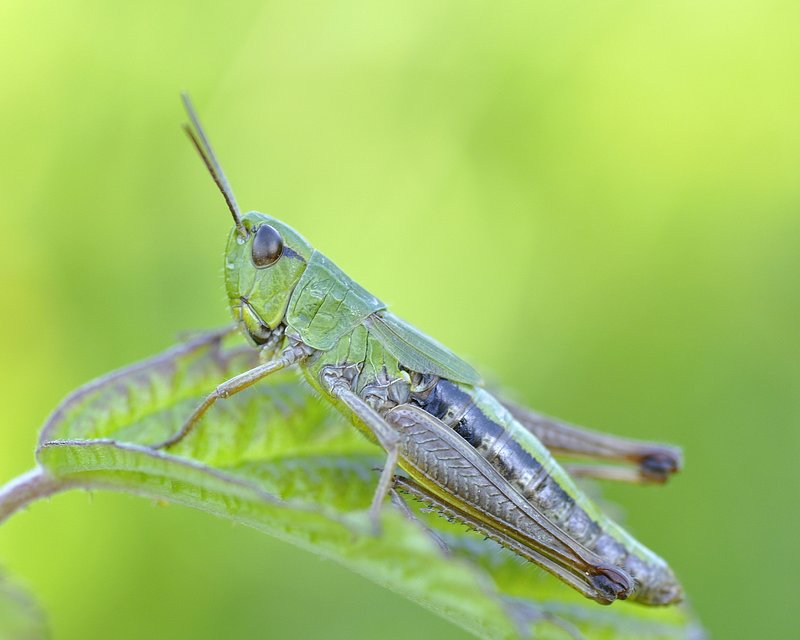Crickets are fascinating insects that are best known for the chirping sounds they produce, often associated with warm summer nights. These nocturnal creatures belong to the Gryllidae family and are commonly found in various environments, including fields, forests, and even homes. While crickets are admired for their distinctive sounds, many people wonder if crickets fly. Apparently, it depends on the species and specific adaptations of the crickets in question.

 Myths and Facts About Cricket Flight
Myths and Facts About Cricket Flight
Can Crickets Fly?
Yes, some species of crickets are capable of flying, but their flying abilities are generally limited and not as developed as those of other insects like butterflies or bees. Most crickets possess wings, but these wings are often more specialized for producing sound than for flight. The process of producing their characteristic chirping sound, known as stridulation, involves rubbing their wings together. This is a primary function of their wings rather than flight. For the species of crickets that can fly, the flight is typically short and not sustained. Crickets are not built for long-distance flight; instead, they use their wings for short bursts of movement, which are often more like gliding than true flying. Their wings are relatively delicate, and their bodies are more adapted for jumping and crawling, which are their primary modes of movement.How High Can Crickets Fly?
The height at which crickets can fly is generally limited. When crickets do take to the air, they usually stay close to the ground. Their flights are low and short, often just a few feet above the surface. This low altitude is sufficient for their needs, such as escaping predators or moving to a nearby location. Unlike insects designed for flying, crickets do not have the wing strength or body structure to sustain high-altitude flights. The height at which a cricket can fly also depends on its species. For example, field crickets may fly slightly higher than house crickets, but overall, their flights remain short and low. Their wings are not adapted for soaring or long-distance travel, and they use flight only when necessary.How Far Can Crickets Fly?
The distance that crickets can fly is also relatively short. Crickets are not long-distance travelers; their flights typically cover only a few meters at most. This limited range means that crickets rely heavily on their strong hind legs for jumping. Flight is more of a supplementary ability used when jumping is insufficient, such as when they need to quickly escape a threat or reach a new hiding spot. Some species of crickets, particularly those that live in fields or meadows, may fly slightly farther than their counterparts in more enclosed environments. However, even for these species, the distance covered by flight is minimal compared to the distance they can travel by jumping.Why Do Crickets Fly?
Crickets may fly for several reasons, although flight is not their main form of locomotion. Here are a few reasons why crickets might take to the air:- Escaping Predators: One of the primary reasons crickets fly is to escape predators. When they sense danger, a quick, short flight may be enough to evade a predator that’s closing in. However, crickets are more likely to jump away from danger rather than fly.
- Seeking Mates: Male crickets use their wings to produce their signature chirping sounds to attract females. Sometimes, they may fly short distances to better position themselves or to get closer to a potential mate. This flight is usually brief and aimed at improving their chances during the mating season.
- Changing Locations: Crickets may also fly to move from one area to another, especially when they are searching for food or trying to find a more suitable habitat. This is more common in environments where food or shelter is scarce, prompting crickets to use their wings to explore new territories.
 Myths and Facts About Cricket Flight
Myths and Facts About Cricket Flight
| Myth | Fact |
| All crickets can fly long distances. | Only some species of crickets can fly, and their flights are typically short and low to the ground. |
| Crickets fly high like other insects. | Crickets generally fly only a few feet off the ground and use flight primarily for short distances. |
| Crickets use their wings only for flight. | Crickets primarily use their wings for creating their chirping sounds, not just for flying. |
| Crickets fly as their main form of movement. | Crickets rely mainly on jumping for movement; flying is secondary and not common in all species. |
| Crickets can fly like butterflies or bees. | Unlike butterflies or bees, crickets are not adept at flying long distances or hovering in the air. |




